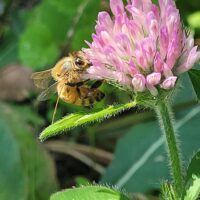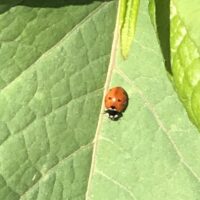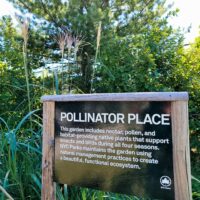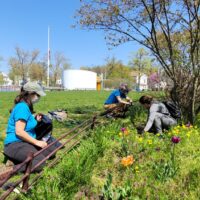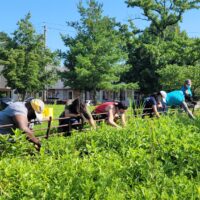Schmul Park Pollinator Garden
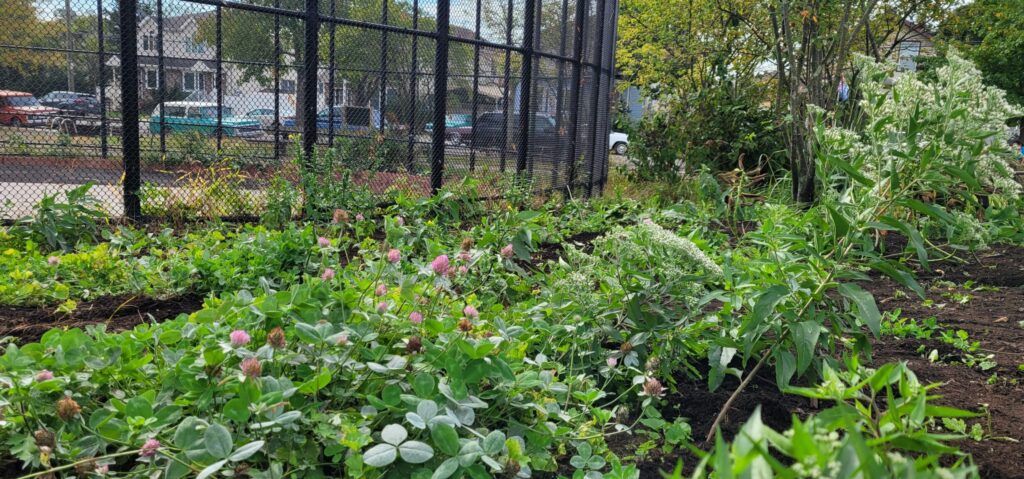
Schmul Park Pollinator Garden October 2021
Garden Background + FAQS + Benefits + Flora + Fauna + Explore Our Garden
NYC Parks will need help to maintain this garden. If you are interested in volunteering with us at Schmul Park, please sign up for our newsletter and watch for notifications on Facebook, Twitter, and Instagram. For school group volunteer opportunities, click here.
Garden Background
When was the Pollinator garden planted, and by who?
In Fall 2020, a new pollinator garden was planted at Schmul Park in the Travis neighborhood of Staten Island. Schmul Park is also soon to become a neighborhood entrance to the 22 acre North Park Phase 1 which is under construction and scheduled to be complete in 2022. The garden project took two days to complete with the help of over 30 volunteers: one day was needed to remove the invasive plants and one day was needed to plant the new native species. An energetic collective of NYC Department of Parks and Recreation staff, CSI Verrazano honors students, Travis community residents, and Freshkills Park supporters teamed up to remove over 20 bags of invasive species and plant 105 native species by the handball courts. For more updates on North Park, click here. Back to Top
Where did the Native Species come from?
The Greenbelt Native Plant Center (GNPC), less than a mile from Freshkills Park, supplied over 100 native species for the planting project at Schmul Park. Some of the grasses at Freshkills Park also came from the GNPC seed bank. The GNPC is the largest municipal native plant center in the United States and their mission is to preserve and provide native plants and seeds to support the restoration of natural areas. Back to Top
Pollinator Garden FAQS
What is a Pollinator Garden?
Pollinator gardens also go by the name of biodiversity gardens. These gardens are designed to be ecologically beneficial to pollinators and wildlife by including plant species native to the area. NYC Department of Parks and Recreation criteria require that a pollinator garden contain at least 60% species native to the New York City Region. Thirty percent should be native to the Northeast region, and can include native cultivars, known as “nativars”. In the simplest terms, a nativar is a cultivated plant that originated from a native species. Nativars, while easier to maintain, do not have all of the characteristics of the native plant and so do not necessarily provide the same ecological benefits. The remaining 10% of the plantings can be non-native and must be non-invasive. Back to Top
What are Native Species ?
A native plant is a plant that occurs naturally in a particular region or ecosystem without direct or indirect human intervention. Typically plant species found in North America prior to European settlement are considered native species. Back to Top
What are Invasive Species ?
Invasive species are a major threat to native plant biodiversity. An invasive species can either be a plant or animal, that grows aggressively, spreads, and displaces other species. Many invasive species are exotic or nonnative species that were either intentionally or accidentally introduced from outside of North America. An invasive plant that colonizes a new area may gain an ecological edge since the native insects, diseases, and foraging animals do not keep their growth in check. Sometimes, invasive plants can become host plants or food for invasive wildlife, like the Spotted Lanternfly. Back to Top
Benefits
Why are Native Species so Important?
Since native species have evolved in a particular region over thousands of years, they have adapted to the local soils and climate, and are more likely to thrive with minimal care than exotic species. This means that they require less water, and very limited pest control or fertilizers. Native species are also essential to a healthy ecosystem and support local biodiversity. Everything from the shape and structure of the flowers to the chemical content of the leaves is tailored to the feeding habits of native insects, birds, and animals. Back to Top
Why Plant Native Species over Ornamental Species?
In contrast to native species, ornamental species require more work to maintain and the insecticides and fertilizers necessary for their health can cause pollution. Ornamental species have been bred for desirable garden traits, like extended bloom and extra petals, and as a result, the ecological function of the plant is often lost. For example, double flowers (ornamental species cultivated to have more petals) which stay open longer, are often sterile or produce less food for pollinators. The mutation that creates extra petals comes at the cost of pollen-producing stamens. Further, those extra petals do not have pollinators in mind and they make any available nectar difficult or impossible for pollinators to access. According to Environmental Entomology, ornamental flowers only attract generalist (less picky) pollinators and not specialist (native) pollinators. Both generalist and specialist pollinators make up a sustainable pollinator community. Back to Top
Flora + Fauna
What has been planted at the Schmul Park Pollinator Garden?
- Black Highbush Blueberry ( Vaccinium Fuscaturn)
- Purple Lovegrass (Eragrostis spectabilis)
- Nantucket juneberry (Amelanchier Nantucketensis)
- White Snakeroot (Ageratina altissima)
- Orange Butterfly Weed (Asclepias tuberosa)
- Wild Geranium (Geranium maculatum)
- Evening Primrose (Oenothera biennis)
- Common Milkweed (Asclepias syriaca)
- Wild Violet (Viola sororia)
- Monarch Butterfly
- Western Honey Bee
- Seven-spotted Lady Beetle
What pollinators and insects have been observed at the pollinator garden?
- Monarch Butterfly (Danaus plexippus)
- Nearctic Blue Mud-dauber Wasp (Chalybion californicum)
- Asian Lady Beetle (Harmonia axyridis)
- Gray Hairstreak (Strymon melinus)
- Common Eastern Bumblebee (bombus impatiens)
- Cabbage White (Pieris rapae)
- Hover flies (syrphidae)
- Western Honey Bee (apis mellifera)
- Seven-spotted Lady Beetle (Coccinella septempunctata)
- Narrow-headed Marsh Fly (Helophilus fasciatus)
Explore
Upcoming Volunteer Opportunities
- Check out our calendar!
Past Programming
- In 2021, Schmul Park’s Pollinator Garden was part of the Parks for Pollinators BioBlitz and the 6th Annual City Nature Challenge.
- Check out some of our past volunteer projects at Schmul Park here.


